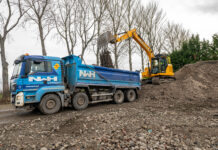
By Dave Kelman, project director for Crosswind Developments
While we can’t predict with any real certainty what our offices will look like in the future, we can be fairly certain that they will need to be different, with flexibility to provide a variety of spaces rather than formulaic groups of identical workstations. Above all however they will need to be energy efficient and sustainable as we move towards net zero.
Working from home, flexible and hybrid working, together with Zoom and Teams have changed ‘work’ for good, but they can leave us feeling isolated, without the face-to-face connections and interaction that stimulate and drive us all. Office environments need to provide experiences that working from home can’t.
With more of us returning to our workplaces, on either a full time or flexible basis, there will inevitably be demand for environments that foster interaction, with a variety of spaces for collaboration, 1:1’s, break-outs, team sessions, meeting pods and hot desking, whether standing up or sitting down. Few existing offices have been designed with the flexibility to provide ‘agile workspaces’ and some will rapidly become obsolete.
As we move forward and realise that opportunities for better work/life balances and wellbeing can be embraced, office design will focus more shared spaces that encourage people to come together, interact socially and share ideas in less formal settings. There is also heightened awareness of the benefits that the fresh air and natural surroundings of shared, safe green spaces can bring to our wellbeing whilst improving biodiversity.
Unfortunately, many existing office buildings are inefficient with high energy costs, which are only going to increase further. In an ideal world the most sustainable solution would obviously be to re-use and adapt existing commercial buildings, but retrofitting is often expensive and compromised.
Energy Performance Certificates are a measure of energy consumption and, when combined with different standards (such as BREEAM, Fitwell and NABERS), can drive improved energy performance. Changes to regulation in England and Wales will mean that all leased commercial buildings will need an EPC rating of ‘E’ or better by next year, rising to ‘C’ by 2027 and ‘B’ by 2030. In Scotland a new regulatory framework is being developed to ensure all non-domestic buildings are net zero for heating by 2045, with initial consultation this year leading to regulation by 2025.
The zero carbon journey needs to account for both embedded emissions (i.e. those incurred during manufacture, transport to site and installation) together with operational emissions during the building’s lifecycle. Theoretical modelling needs to be verified in real life, once buildings are occupied and if a universal standard or methodology could be agreed it would help reduce the number of misleading environmental claims.
One of the consequences of the increased requirement to reduce energy consumption will be a demand for greener buildings, with boards and investors increasingly focussed on sustainability and wider ESG issues. New office buildings may be only part of the answer but their journey to net zero should embrace the concerns and desires of employers and employees alike, with access to open space and future flexibility built in. Not only is wellbeing a valuable currency in recruitment and retention, shared open spaces can enliven our neighbourhoods and communities to everyone’s benefit.
At Elements Edinburgh Crosswind Developments is committed to providing a genuine mixed-use community on a brownfield site, with the most energy efficient commercial and residential space. It will deliver a well-connected and unique live/work environment blending the benefits of both urban living and generous open, safe green spaces on the edge of town. Through careful placemaking the buildings and the spaces around them will stimulate socialising, encourage relaxation and complement the key facilities and amenities that underpin a true 20-minute neighbourhood.
Undertaking any new-build is a huge responsibility but when we do build, it must be with a genuine commitment not only to sustainability for future generations, but to making a positive contribution to how people can live and work locally.







